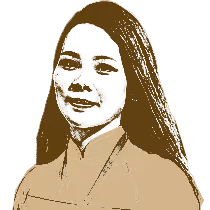Embracing Vietnamese Lunar New Year: Traditions and Unique Experiences
The Vietnamese Lunar New Year, or Tết Nguyên Đán (commonly referred to as Tet), is the most significant holiday in Vietnam. Marking the arrival of spring based on the lunar calendar, Tet typically falls in late January or early February. It’s a time for family reunions, paying respects to ancestors, and welcoming the New Year with hopes for prosperity and happiness.

The Significance of Tet
Tet is deeply rooted in Vietnamese culture and traditions. It’s not only a moment to bid farewell to the old year but also to embrace new beginnings. The holiday is steeped in symbolic rituals and customs:
Preparations
Preparations for Tet begin weeks in advance. Families thoroughly clean their homes to sweep away bad luck and make room for good fortune in the coming year. This cleaning symbolizes purification and renewal. Homes are then decorated with festive elements such as peach blossoms, apricot blossoms, and kumquat trees, which represent prosperity. Red banners with calligraphy are hung to invite happiness and success. Additionally, families shop for Tet essentials, including food, new clothes, and gifts, creating a vibrant and bustling atmosphere in local markets.

Traditional Foods
Food plays a central role in Tet celebrations, with each dish carrying symbolic meaning. Bánh chưng (square sticky rice cake) and bánh tét (cylindrical sticky rice cake) are staples, representing the earth and sky. These cakes are often prepared by family members working together, strengthening familial bonds. Other traditional dishes include boiled chicken, a symbol of purity; pickled vegetables, signifying a balance of flavors in life; and dried candied fruits, symbolizing sweetness for the year ahead. Meals during Tet are not just about nourishment but also about connecting with loved ones and honoring traditions.

Offerings to Ancestors
Honoring ancestors is a cornerstone of Tet. Families set up altars with photos of their ancestors, adorned with offerings such as fruits, bánh chưng, tea, and wine. These offerings express gratitude and invite the spirits of ancestors to join the family in celebrating the New Year. The act of lighting incense and praying at the altar is both a moment of reflection and a gesture of respect, reinforcing the deep connection between past and present generations.

First Visitor Tradition
The first person to enter a home after midnight on New Year’s Eve, known as "xông đất," is believed to determine the family’s fortune for the entire year. Families often carefully choose someone with a compatible zodiac sign and a positive, successful disposition to be the first visitor. This tradition reflects the importance of starting the year on an auspicious note. Visitors typically bring gifts or red envelopes (lì xì) as tokens of good luck, further emphasizing the spirit of giving and goodwill in Tet.

Celebrations Across Vietnam
During Tet, the country comes alive with vibrant festivals and activities. Cities and towns are adorned with colorful decorations, and streets buzz with lively markets selling Tet essentials. Families exchange red envelopes, and firework displays light up the night sky.
A unique aspect of Tet is the migration of people back to their hometowns to celebrate with their families. This mass exodus leaves the usually bustling streets of cities like Saigon and Hanoi unusually quiet. Public spaces, however, are beautifully adorned with flowers, lanterns, and festive decorations. These spots become popular destinations for locals and visitors alike, who flock to snap photos and soak in the festive atmosphere.

In rural areas, traditional games, lion dances, and folk performances add to the festive atmosphere. It’s a harmonious blend of joyous revelry and solemn respect for heritage.
Celebrate Tet with a Heritage Line Cruise
For an unforgettable way to experience Tet, embark on a Heritage Line cruise along Vietnam’s iconic waterways. In the north, visitors can combine a cruise on Halong Bay or Lan Ha Bay with a trip to Hanoi to fully experience the Tet festivities. While in the southern region, Saigon serves as the starting or ending point for lower Mekong River cruises aboard the luxurious Jahan and Jayavarman cruises, offering a perfect blend of cultural exploration and relaxation.

The Vietnamese Lunar New Year is more than just a celebration; it’s a profound cultural expression of unity, hope, and renewal. Whether you’re strolling through bustling markets, sharing a festive meal with loved ones, or exploring Vietnam’s majestic landscapes on a Heritage Line cruise, Tet offers unforgettable moments that resonate with the heart and soul of Vietnam.
















